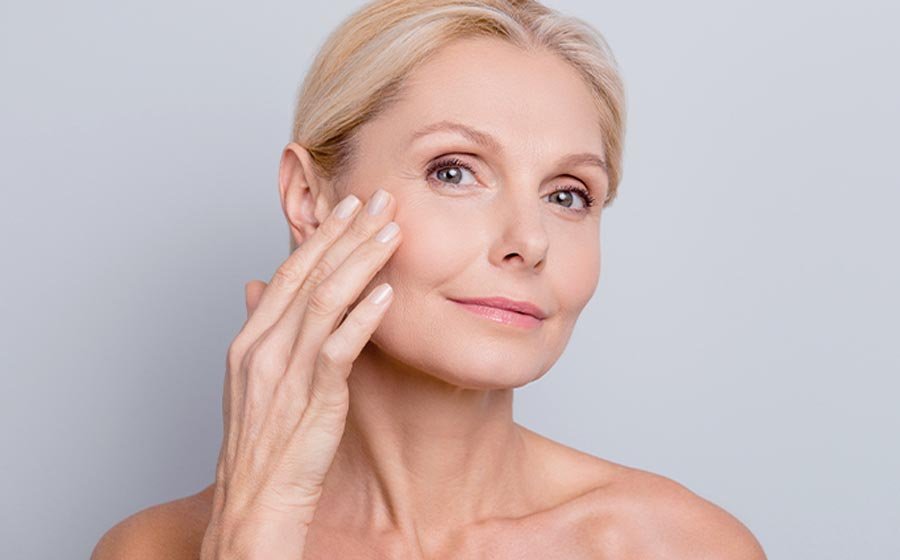The human body naturally produces collagen, but the aging process slows it down. When collagen amount and quality fall, it may result in wrinkled skin. The good news is, you can use multiple approaches, including a skin tightening serum, to boost collagen. But you must check the product before using them. Not all products that claim to boost collagen production are as effective as others.
Restoring Lost Collagen
Collagen fortifies skin elasticity, helping you look younger. Losing collagen reduces the youthful glow leading to skin aging — usually through sagging facial skin. There are ways to restore collagen through cosmetic treatments. Before opting for any solution, consult a dermatologist or other skincare expert.
Benefits of Collagen for the Skin
Collagen makes the skin more elastic and stronger through hydration. The benefits of collagen in facial skin are noticeable through having radiant skin. Once you start noticing signs of aging, you may want to update your skincare routine and habits that may be triggering this problem. Preventive measures are also helpful. Here are a few ways to restore facial skin collagen:
1. Apply Skin Tightening Serum and Creams
Serums and creams are the most straightforward and affordable collagen-rebuilding options, though they do not offer instant results. Coupled with a skin moisturizer, serums hydrate the skin, helping make wrinkles less noticeable. Creams with retinoids are effective for boosting facial collagen production.
2. Take Vitamin C
Vitamin C is a natural and powerful antioxidant and can double as a booster for collagen production. High vitamin C concentration in the skin is enough to rebuild lost collagen. You can also enhance skin protection from harmful light by using vitamin C serums with ferulic acid and vitamin E.
3. Consume a Balanced Diet
Eating a well-balanced diet containing various nutrients is an excellent approach to rebuilding collagen. Supplements may be the easy way out for many, but a balanced diet is the basis of a good skincare routine. A balanced diet also prevents inflammations associated with skin damage. Foods with amino acids, vitamins C and E, antioxidants, and minerals may boost collagen synthesis and may help prevent skin aging.
4. Limit Your Sugar Intake
Added sugars accelerate the synthesis of glycation products, which reduces collagen production. Limiting added sugar intake may help reduce this effect, leading to younger-looking, moist skin.
5. Chemical Peels and Collagen Injections
Chemical peels are one of the anti-aging procedures that enhance skin cell reproduction, which helps rebuild collagen. Tailored injections can also help you achieve more youthful skin. These injections are safe dermal fillers that restore natural facial skin.
6. Regular Exercise and Enough Sleep
Stress is a leading cause of skin aging. Managing stress can be an excellent prevention strategy. Along with stress-reducing benefits, regular physical exercise may contribute to restoring your skin’s glow. Daily exercises like jogging and cycling may help you keep your skin looking younger. A good night’s sleep and meditation are also effective ways of reducing stress and retaining your skin’s glow.
7. Consume Antioxidants
Antioxidants offer protection from products of body metabolism, such as free radicals. Substances like tobacco and other chemicals also produce harmful radicals. Antioxidants like retinol boost collagen production, helping you keep your skin rejuvenated.
Timeline of Collagen Restoration
Do not expect instant results as collagen production may take up to 12 weeks. You should also understand that collagen restoration is not permanent. You must remain consistent in your skincare and lifestyle practices.
Along with multiple ways of restoring lost collagen in facial skin, you must also prevent the loss before it starts. Preventive measures include:
- Reduce your skin’s exposure to the sun
- Eat a plant-based diet or a balanced diet recommended by an expert
- Remain consistent with your skincare routine
- Avoid tobacco use
- Reduce stress and get enough sleep
- Limit alcohol use
Rebuild Collagen in Your Facial Skin
Even when you’ve lost collagen, custom procedures like using a skin tightening serum and vitamin C may help you rebuild it. Skincare and regular visits to a dermatologist for specific treatment are great for restoring lost collagen. Certain foods are also excellent alternatives for stimulating collagen production. With the correct routines, you won’t have to make several trips to a dermatologist as long as you buy certified and proven skincare products.
















